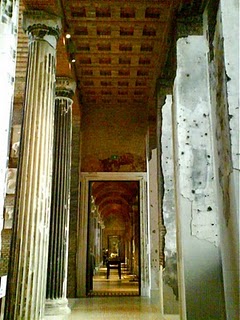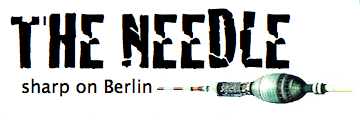 Germany’s bold confrontation with its past, its sometimes self-flagellating intent to imprint guilt and scars onto its official history, marks the Neues Museum on the Museum Island. The project rejects the impulse to prettify and monumentalise the past as a glorious continuity. Here, history is full of destruction and we are the survivors, and also the bearers of a surviving mentality: one emergent from trauma, rebuilt with responsibility and, in places, luminous and new.
Germany’s bold confrontation with its past, its sometimes self-flagellating intent to imprint guilt and scars onto its official history, marks the Neues Museum on the Museum Island. The project rejects the impulse to prettify and monumentalise the past as a glorious continuity. Here, history is full of destruction and we are the survivors, and also the bearers of a surviving mentality: one emergent from trauma, rebuilt with responsibility and, in places, luminous and new.

The building, half-destroyed in WW2 and neglected under the DDR, finally reopened this year. It was rebuilt by David Chipperfield, who is British; like an anthropologist outsider, he is witness to Germany at its most thoughtful. The museum houses in part objects from early German archaeology. The twist is that it also holds the Egyptian collection, and becomes a monument to German imagination about the Orient.
In one room are a series of turn-of-the-century friezes of ancient places in Egypt where German archaeologists dug. These places are romanticised, the archaeologist is adventurer, there is colonial prestige at stake. There is also delight in difference, in reconstructing what was lost out of the Saharan sands. The Neues Museum lovingly reproduces classical columns, friezes, porphyry medallion floors. It is a romance with colonialism and empire-building which could be as dangerous as it was imaginative and curious.


These romantic flourishes have all been heavily scarred by WW2 war damage, which Chipperfield leaves intact: bullets penetrating the walls, the columns touched by fire. The old German desire to rebuild the ancient world at home is ruined, and as ruins is reconstituted. And so, the Neues Museum is a palace of broken dreams, shattered desires, empires ending. It is poignant to see objects on display that show time’s passing in a building that reveals its own changes over time. Its very walls show us man’s ability to destroy, and to create something better.
 Germany’s bold confrontation with its past, its sometimes self-flagellating intent to imprint guilt and scars onto its official history, marks the Neues Museum on the Museum Island. The project rejects the impulse to prettify and monumentalise the past as a glorious continuity. Here, history is full of destruction and we are the survivors, and also the bearers of a surviving mentality: one emergent from trauma, rebuilt with responsibility and, in places, luminous and new.
Germany’s bold confrontation with its past, its sometimes self-flagellating intent to imprint guilt and scars onto its official history, marks the Neues Museum on the Museum Island. The project rejects the impulse to prettify and monumentalise the past as a glorious continuity. Here, history is full of destruction and we are the survivors, and also the bearers of a surviving mentality: one emergent from trauma, rebuilt with responsibility and, in places, luminous and new. The building, half-destroyed in WW2 and neglected under the DDR, finally reopened this year. It was rebuilt by David Chipperfield, who is British; like an anthropologist outsider, he is witness to Germany at its most thoughtful. The museum houses in part objects from early German archaeology. The twist is that it also holds the Egyptian collection, and becomes a monument to German imagination about the Orient.
The building, half-destroyed in WW2 and neglected under the DDR, finally reopened this year. It was rebuilt by David Chipperfield, who is British; like an anthropologist outsider, he is witness to Germany at its most thoughtful. The museum houses in part objects from early German archaeology. The twist is that it also holds the Egyptian collection, and becomes a monument to German imagination about the Orient.


